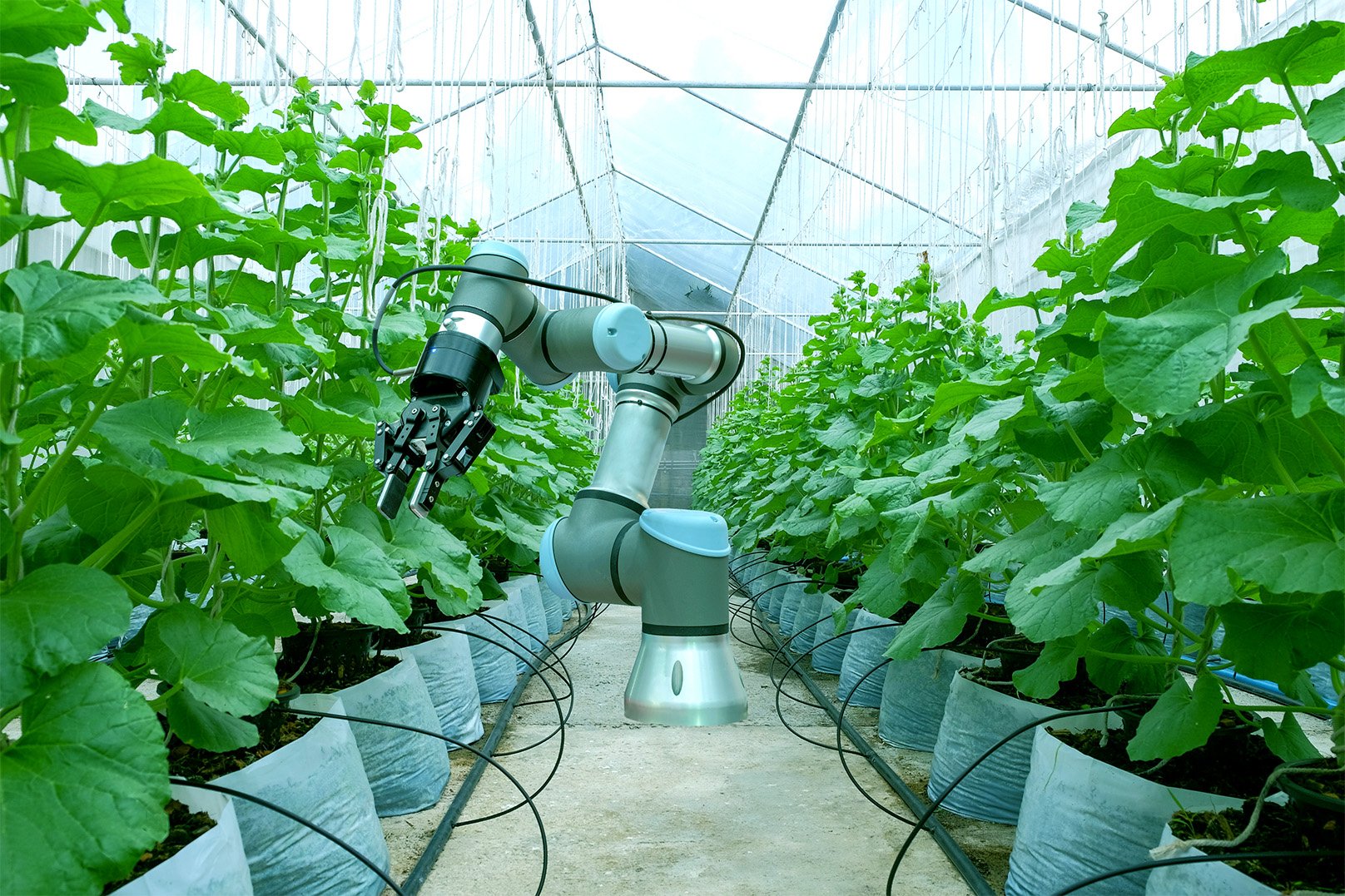Futures of Food: Five Emerging Issues Transforming Food Systems
Drawing on in-depth foresight research by renowned futurists Prof. Sohail Inayatullah and Dr. Ivana Milojević, we spotlight five emerging issues that may revolutionise global food systems over the next 30 years.
FUTURE PROOF – BLOG BY FUTURES PLATFORM
This article is based on the research by futurists Prof. Sohail Inayatullah and Dr. Ivana Milojević, as featured in Futures Platform’s Transformative Food Systems and Paradigms foresight radar.
Steaks grown in labs, urban jungles of vertical farms, and smart systems slashing food waste — welcome to the future of food. Our latest foresight radar, Transformative Food Systems and Paradigms, explores 16 emerging issues that may transform what’s on our plates and how it gets there over the next 30 years. In this article, we spotlight five of them.
1. Cellular Agriculture
In the not-too-distant future, your steak might come from a lab rather than a cow.
Traditional animal farming, though crucial for feeding billions, heavily impacts the planet, contributing up to a fifth of global greenhouse gas emissions. Cellular agriculture uses advanced technology to grow animal cells in controlled environments that mimic the conditions inside an animal's body.
Asia is emerging as a key player in the cultivated meat market. Singapore has already paved the way as the first country to approve lab-grown meat, and both China and Japan are heavily investing in the technology. In the coming decades, achieving price parity with traditional meat products will be critical in making cultivated meat a viable option globally.
While cellular agriculture holds the potential to significantly reduce emissions and boost food security, its widespread adoption will also bring major changes to food supply chains and the global economy, given the heavy dependence of many nations on traditional farming.
Likelihood estimate: High. While consumer tastes remain uncertain, large corporations are already innovating in this area, and with significant investments from many countries, the impact could be dramatic.
2. Internet of Things (IoT) in Food
Nearly one-third of global food production is wasted every year. The Internet of Things (IoT) could significantly reduce this waste by optimising food production and logistics through real-time monitoring.
IoT, a network of devices that collect and transmit data via the Internet, can bring numerous benefits to food suppliers, processors, and retailers. For farmers, it means managing crops and livestock with unparalleled precision and efficiency. In logistics, it enables the monitoring of production conditions, shipping times, and temperatures for effective cold chain management. For companies, it enhances responsiveness to market demands, helping to reduce surpluses and improve overall operational efficiency.
By 2050, wealthy regions could see a fully connected "Internet of Food," where real-time monitoring and management of food production and distribution become the norm. This will drive a future where food waste is minimised and food safety is maximised. Ensuring connectivity with lower-income areas will need to be a key policy goal for achieving these benefits on a global scale.
Likelihood estimate: High. As technology advances and costs decrease, the widespread adoption of IoT in food production and logistics is highly likely due to its strategic advantages.
3. Big Data
In the future, food could be developed like software, with precision biology enabling the design of proteins and nutrients tailored to exact specifications for nutrition, taste, texture, colour, and health benefits. Industrial-scale fermentation bioreactors could produce these high-quality proteins and ingredients using far fewer resources than traditional food production.
This model promises sustainable, personalised nutrition at scale, where people can download food recipes from global databases of engineered food molecules and 3D print them at home.
Yet, while the potential of big data for food production and personalised nutrition is immense, this shift depends on technological acceptance and overcoming resistance to change.
Likelihood estimate: Medium. This could be a dramatic shift in the food paradigm or simply hype. Data ownership and the role of large food corporations will be decisive factors in this transformation.
4. Urban Agriculture
By 2050, more than two-thirds of the world's population will live in urban areas, posing significant challenges for supply chain management from harvest to consumer.
As cities expand, indoor vertical farming and other innovative methods could transform obsolete infrastructure into high-density production facilities close to where food is needed. In a future where urban areas produce 30-40% of their food needs, there would be notable reductions in transit costs, packaging, and spoilage, thereby enhancing efficiency and lowering the environmental impact.
Likelihood estimate: High. Ongoing urbanisation, coupled with strategies for climate change mitigation and adaptation, will likely drive cities toward greater self-sufficiency in food production.
5. Regenerative Agriculture
Soil health rarely makes the headlines, yet it could be one of the most vital conservation efforts of our time. By fostering a healthy soil ecosystem, farmers can cut down on chemical inputs, reducing costs and limiting environmental harm.
Regenerative agriculture, a term that encompasses a variety of sustainable farming practices, places soil health at the forefront. It blends modern science with traditional soil husbandry to create sustainable farming systems that are sustainable and in harmony with nature. With practices like crop rotation and the maximal recycling of farm waste, regenerative agriculture aims to meet the growing demand for food while enhancing the health of land, water, climate, and communities.
Regenerative agriculture promises a net positive environmental and social impact, although transitioning to this model could take decades. A key part of this shift involves collaboration with businesses and stakeholders to develop new service offerings and innovative financial strategies that support this change.
Likelihood estimate: Medium. Paradigm shifts can take decades and require a fundamental change in worldview, along with multiple driving forces. At this stage, it appears that regenerative agriculture will remain a niche approach as funding continues to favour food tech innovations.
Want to see more?
Access the Transformative Food Systems and Paradigms radar today to explore 11 additional emerging issues and over 70 foresight analyses on future trends, wild cards, and weak signals of change.






